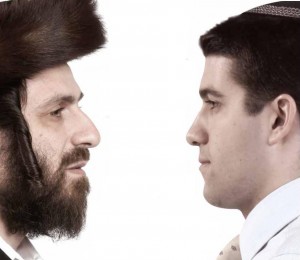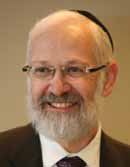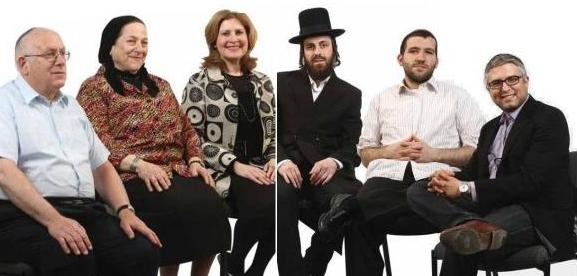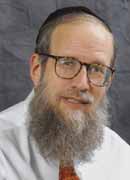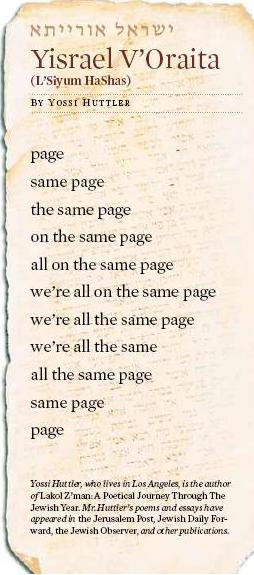We fight and quibble, like all families. At times, the ideological differences between us—Chassidic, Sephardic, Yeshivish, Modern Orthodox—seem like formidable, even insurmountable, walls. But then something happens. A family in Itamar is stabbed to death while sleeping in their home on Friday night; innocent children are murdered in Toulouse; almost an entire family in Rechovot is destroyed in a devastating fire. Suddenly seemingly impenetrable walls disintegrate; deep divisions melt away as though they never existed. We feel a throbbing pain; we are overwhelmed with grief. We may have never heard the name Fogel or Holtzberg or Sandler before, but now these names are inextricably bound with our shared destiny. They will be immortalized in our hearts. And irrespective of whether we live in Dallas or Teaneck or Meah Shearim, we feel bereft. We have lost a family member. Am Yisrael Chai.
In this issue dedicated to achdut, we asked a number of rabbis, thinkers and educators across the spectrum of Orthodoxy to respond to the following questions: How can we achieve genuine harmony and greater tolerance within the Orthodox world without compromising our core beliefs and ideals? Is unity possible? Why is it so difficult to achieve? What are your suggestions and ideas for achieving greater ahavat Yisrael?
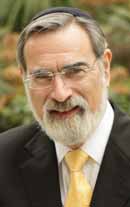 Chief Rabbi Lord Jonathan Sacks
Chief Rabbi Lord Jonathan Sacks
The beauty of creation, as we believe and as science ever more wondrously shows, is that Unity above creates diversity below, and the more complex the life form, the greater the diversity. The Rambam (Moreh HaNevuchim 2:40) says that though diversity applies to all life forms, it applies more to humans than to any other. To which one must surely add: and among Jews more than most.
No small people is more diverse—ethnically, culturally, attitudinally and religiously—and the more religious, the more diverse. There was hardly a Jewish settlement in the Middle Ages without its own minhagim and piyyutim. In the eighteenth and nineteenth century, each Chassidic group and yeshivah had its own style, its own niggunim, its own derech halimud, its own role models, its own spiritual tonality. The way of Ger was not that of Chabad; the way of Volozhin was not that of Mir.
Diversity is a sign of strength—not weakness. As Rabbi Yechiel Michel Epstein notably said in the introduction of Aruch HaShulchan to Choshen Mishpat, in the very last of the 613 commandments, the mitzvah of writing a sefer Torah, Moses doesn’t use the word Torah but rather shirah, because in this respect Torah is like music in that its greatest beauty lies in complex harmonies. Or as the Netziv writes in his commentary on the Tower of Babel, uniformity of thought is not a sign of freedom, but its opposite.
JEWISH UNITY. IT STARTS WITH…YOU.
“Behold, how good and how pleasant it is when brothers dwell together in unity!”(Psalms 133:1)
With a few simple words, King David expresses one of the most pressing needs our people face in every generation.
Lack of unity in the Jewish community is disheartening. Whenever we see factions clash, our spirits sag. Even if we believe that one side is right and the other is wrong, we mourn the discord itself, often beyond the source of the conflict. Conversely, when we can be a single people despite our differences, we are filled with hope. The expulsion of Jews from Gush Katif was one of the most disputed incidents in modern Jewish history, but who among us could not help but be inspired by the picture of settlers and soldiers, separated by a fence, but praying Minchah together? “Who is like Your people Israel, a singular nation in the land?”
Yes, we may have differences. They may be big differences. They may be legitimate differences. The question is what do we do when such differences arise? We must recognize that it is possible for reasonable people to disagree. If we do, we can remain united despite our differences. If not, we get factions, each saying that the members of the other are not “real Jews.” That hurts everyone and helps no one.
Following the death of King Solomon, a civil war divided the nation into two kingdoms, Israel and Judah. The prophets foretold that in Messianic times, we would reunite into a single nation again. The Ten Tribes of Israel were “lost” in the Assyrian exile; we are descended from Judah, which is why we’re called “Jews.” When our modern state was founded in 1948, we didn’t call it “Judah”; we called it Israel. This represents our spirit of unity. Separated by civil war, hundreds of years as separate nations, thousands of years lost in exile, yet they are still our brethren, for whose return we long.
If we can feel so united with brethren so far removed, can we accomplish the same with others we face on a daily basis? Can we recognize that all Jews are our brothers and sisters, regardless of what they may or may not wear on their heads?
The power lies within each of us, but no one of us can do it alone. A chain is only as strong as its weakest link. Every member of the Jewish nation must contribute towards unity. I can’t be unified with you unless you are also unified with me.
Whatever our differences may be, we must remain a single nation with a single heart, directed to our Father in Heaven. Someone has to take the first step. Unity starts with me and you.
By Rabbi Steven Burg
OU Managing Director
Rabbi Yitzchok Adlerstein
How do we repair the deep rifts between subgroups in the Orthodox world? Some suggest that bringing people together, allowing them to see the “other” in a different light might work. It might, but then again, it might just do the opposite. Some of us find it easier to respect people who are different from a distance. Like it or not, there are serious ideological issues that divide Orthodox Jews from each other. Ugly stereotypes abound—but they are based on enough truth to make people feel uncomfortable around others. Many in the Modern Orthodox world look toward the right and, as Rabbi Zev Leff, rav of Moshav Matityahu in Israel, once put it at a West Coast OU convention, “believe that if they pay it any attention, they too will soon be taking showers wearing a black hat on their heads.” Similarly, those on the right believe that if they show any recognition to the Orthodox center, their shtreimel-donning rav will soon be replaced by a feel-good rabbi with a rebbetzin whose skirts are materially challenged. The result is that we feel estranged and distant from other frum Jews.
Can we make any progress toward curing the divisiveness and sinat chinam that we’ve lived with for close to two thousand years?
Maybe we need to start with the people in charge, so to speak—the shakers and movers. As I followed the volleys of accusations between groups after the Beit Shemesh debacle, I had to take a look at my own behavior, and was no longer comfortable with it. The most difficult moment for me was when I learned how a distinguished figure from a different ideological persuasion than the parents in the beleaguered school reacted to an appeal for others to come to their aid. He responded that he was entirely opposed to the behavior of the zealots. He told people in his shul to show their support for the parents. He, however, would not and could not attend a “unity rally” that the parents had organized. People might interpret that to mean that he approved in a small way some of the positions that the school took on unrelated matters. This was something he simply could not risk doing.
Writing from thousands of miles away, I do not claim to understand the ideological pressures of Orthodox life in Israel. I understand the basis for this rav’s thinking; I’ve had to employ it often enough myself. Looking at Beit Shemesh, however, I now have a visceral feeling that I don’t want to import the same stratification and alienation to our shores.
Among many of us rabbanim, the obstacle to greater unity is not contempt for the other, but the fear that by coming together, we weaken our own positions. Beit Shemesh, I think, proves to us why we can and should take some small risks. I believe that risk-taking for the benefit of bein adam lechavero was endorsed under different circumstances by none other than the Chazon Ish. In his work on Shevi’is (12:9 s.v. venireh), he questions why Chazal were so liberal about lending various implements to people who might use them in violation of the laws of shemittah. True, they might use them for permissible activities—but then again, they might not. We are duty-bound halachically to be strict when we might otherwise violate a Torah law like lifnei iveir (placing a stumbling block in front of a blind person; the prohibition against facilitating another person’s transgression). Why, then, are we not strict here? He explains that if we were to be machmir (strict) even in situations of doubt, we would instead create definite stumbling blocks, which would be worse. By banning the lending of our property to others because they might do something inappropriate with them, we close off many avenues of doing chesed to others, and stymie relating to our neighbors in ways of peaceful coexistence. Certainly, he adds, we are obligated not to increase hatred and rivalry with others—which is what a stricter ban would do.
Can we make any progress toward curing the divisiveness and sinat chinam that we’ve lived with for close to two thousand years?
Beit Shemesh is really a microcosm of our entire Orthodox community; it demonstrates that when we want to live our ideological lives free of any risk of legitimizing others, we lose out in all the ways the Chazon Ish predicted. Not so long ago, Rabbi Yosef Chaim Sonnenfeld and Rabbi Avraham Yitzchak HaCohen Kook walked arm in arm to secular kibbutzim to urge greater Torah observance—despite their antipodal positions on Zionism. We need to find ways in which rabbanim can demonstrate that you can fiercely contest everything that someone else says, yet still treat him like a cherished brother.
In the wake of Beit Shemesh, a group of rabbanim in Atlanta did just that. At Minchah on a fast day, they traded pulpits. [See sidebar on page 35.] Congregants in each shul faced the rav of the shul where they didn’t (or wouldn’t) daven. The rabbis made a point of declaring that, despite their ideological differences which were not being papered over, they all loved and cherished each other. There is no contradiction between deep-seated disagreement and love and respect for others. It was, I believe, a powerful moment, and a potent first step for the rest of us.
Rabbi Yitzchok Adlerstein is the director of interfaith affairs for the Simon Wiesenthal Center. He is also a member of the Jewish Action editorial board, and a founding editor of Cross-Currents.com.
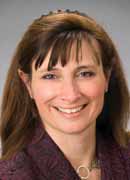 Dr. Erica Brown
Dr. Erica Brown
I grew up as an Ashkenazic Jew in a predominantly Sephardic town: the square mile spit of sand and streets of Deal, New Jersey on the shore. I don’t look Syrian, and when people asked me if I was Syrian, I would joke about being a wannabe. It was not because I saw myself ritually or materially like the Jews around me, but I saw something in the Syrian culture that made me very envious. The community had a certain kind of intimacy, an easy sort of connectedness that allowed people with very different customs and behaviors to sit at the same Shabbat table without judgment. At the time, only a small percentage of the Jews in Deal were really Sabbath observant (now the number is much larger), but almost everyone I knew kept a kosher home, had Friday night dinner and observed the holidays in some way. Rumor had it that every woman went to the mikvah.
As I grew older and became more of a student of Jewish history, I understood that this kind of acceptance was common in other Sephardic communities. Certain commandments were central to maintaining the integrity of one’s Jewishness, but the bonds of family and community were even stronger than any distance created by differing ritual practices or levels of observance. Unity was paramount, and in order to achieve it, certain individual predilections had to be compromised for the ultimate sake of the wholeness of the community. The community is your family, and everyone in a family does not look alike or behave alike, but there is room at the table for them all.
I was not seeing that in most of the Ashkenazic communities I lived in or visited. Often very small differences of ritual practice created what seemed like untraversable distances among Jews. The Ashkenazi air always seems thick with judgment: too much to the right of me, too much to the left of me, not close enough for friendship. Family? Forget about it.
This is not a sociological study of religion. These were my naïve childhood observances of the way different communities function and achieve or miss the goal of unity. Even so, I still believe the only way unity and true ahavat Yisrael can be achieved is to believe in one’s heart and to illustrate through one’s actions that family comes first. We are immensely lucky to be part of an extended family that is thousands of years old. Religion is a critical glue in keeping family together, but we have to remember that it is not the only glue. I mean this as no heresy. Being Jewish is a faith, a nationality, an ethnicity and a layer of identity. Whichever layer you choose as your outer garment determines much of what lies beneath.
I work with many Jews who are not observant of Jewish law but are proudly committed to the Jewish community. They give more tzedakah than most Orthodox Jews I know, and they donate more of their time to making sure that Jewish adults with serious disabilities can live independently or that seniors have Meals on Wheels or that new transplants to the area are contacted by the Jewish community and welcomed. They are part of my family, but I would venture to say that they are not seen as part of the family for many of my coreligionists. And that is sad. Because family is family, and family members come in all stripes and colors, irrespective of how they dress or what rituals they observe.
I have learned a great deal from my extended family, and I have not forgotten what it means to grow up near the ocean where it takes a lot of grains of sand to make up a beach.
Dr. Erica Brown is the scholar-in-residence of the Jewish Federation of Greater Washington.
Rabbi Hillel Goldberg
Without denying the friction between different parts of the Orthodox Jewish community and the terrible damage this does, I believe that a historical perspective provides ample evidence that intra-Orthodox relations have shifted, compared to a quarter-century ago. Evidence for the reduction of these divisions and the concomitant bridge-building is seen in the United States and in Israel.
• Outreach programs—and, more widely, the outreach mentality—has de-emphasized differences within Orthodoxy in order to fight the common enemy of assimilation, much as the nineteenth-century gulf between Chassidim and Misnagdim narrowed as the common enemy of Haskalah emerged.
While hiking in the fall of 2008, a member of Temple Beth Jacob, a Reform synagogue in Newburgh, New York, discovered several headstones with Hebrew inscriptions on a steep, thickly wooded hillside. It turned out that the Jewish cemetery, in desperate need of repair, belonged to the Temple.
The Temple’s youth group did an initial cleanup in April 2009, but it was clear that a fence was required. The only question was, where would the money come from?
Several residents of the neighboring Satmar community of Kiryas Joel, led by Zalmon Weinstock of Congregation Oitzer haChesed, read about the cemetery’s need for a fence and drove to Newburgh to meet with Kenneth Packer, chairman of Temple Beth Jacob’s Cemetery Committee.
The Kiryas Joel delegation raised funds within the Satmar community for a gated chain-link fence that still allows passersby to see into the cemetery.
Packer and several men from Kiryas Joel gathered to say Kaddish over the graves and do more work cleaning and repairing the headstones.
“Many stones are broken and will have to be repaired, at great expense,” Packer was quoted in a news article as saying. “But the generosity, kindness and energy of the residents of Kiryas Joel have been invaluable to us. They’ve forged new ties between our two communities.”
• Chareidi Jews now serve in the Israeli army in Nahal Haredi—not yet in numbers that signal a sea change. Even so, the attitudinal change, if partial, remains impressive and repercussive. Obversely, an increasing number of hesder yeshivah graduates are finding ways to move into virtually full-time Torah study, beyond their three-year obligation to the Israeli army. In admittedly small but still unprecedented ways, there is a convergence between the two approaches to army service.
• In many programs, friction within the Orthodox community has essentially ceased to exist. Take the OU’s Yachad/NJCD, which is dedicated to enhancing life for those with disabilities; or the OU’s Our Way/NJCD, which seeks to address the social, religious and educational needs of the deaf and hard of hearing Jewish population. Take Shalva, an association for mentally and physically challenged children in Israel; or Rofeh, the medical referral and support service based in Boston; or HASC, which offers programs for those with special needs—in these and other programs, Orthodox Jews of every stripe are both the helpers and the helpees.
Add to this list Chai Lifeline for children with life-threatening illnesses, Satmar Bikur Cholim for any Jew, Ezer Mizion for Israel’s sick, disabled, elderly and underprivileged populations, and a plethora of other medical programs, free-loan funds and other initiatives in Israel and the Diaspora. Leaders of these programs from one “camp” of Orthodoxy work with leaders from other “camps.”
• A quarter of a century ago, Rabbi Joseph B. Soloveitchik would not be cited, or would be cited rarely or uncomplimentary, in various Chareidi publications. Preponderantly, this is no longer so.
• After the Synagogue Council of America folded, the presumed instantaneous unity between modern Orthodox and Agudah circles did not materialize. But the constant fighting over this issue stopped, and with this has come a much warmer, if still incomplete, relationship between these circles.
• Yeshiva University’s rabbinical school, Rabbi Isaac Elchanan Theological Seminary (RIETS)—both its instructors and its students—are viewed far more favorably outside YU circles than they were decades ago.
• Countless incidents that would not have occurred decades ago are now almost routine. For example, Rabbi Moshe Taragin, a rebbe at Yeshivat Har Etzion had a debate with Jonathan Rosenblum, a journalist at Yated Ne’eman [who also writes for Jewish Action -Ed.]. The audience was disappointed. There were no fireworks. Each of the speakers spent a tremendous amount of time complimenting the type of Orthodoxy of the other. A new generation is forging and defending the various groupings within Orthodoxy, and some in this generation do things differently from the previous generation.
• In davening, in offering up one’s holiest thoughts to the Creator of the World, in virtually any shul today—be it modern Orthodox, Chassidic, Yeshivish or some combination thereof—melodies that elevate and inspire one’s prayers are the melodies of the late Shlomo Carlebach. While other melodies may predominate in most shuls, Carlebach tunes are now, at a minimum, part of the mix. This near-universal spread of a single musical frame for facing and speaking to the Creator is unprecedented in Jewish history.
• It is now assumed that there is a universal or quasi-universal “posek hador,” such as Rabbi Moshe Feinstein or Rabbi Yosef Shalom Elyashiv. Before the time of Rav Moshe, this was not the case—not because of the lesser stature of Torah scholars in previous generations. Rather, before the time of Rav Moshe, the relatively restricted modes of communications limited, at least to an extent, the reach of gedolei Yisrael to their own regions, within their lifetime.
There are many causes of increased unity. Technology—always a driving force in history—is one of them. With the explosion of modern communications, the addressing of she’eilot from all over the world to a single address came into being, and with it, the reduction of regional and geographic barriers within Orthodox Judaism.
• Some publications in the Chareidi press routinely print news of modern Orthodox events without arousing comment or controversy.
• Even in Beit Shemesh, the scene of much controversy, one may, without denying the significance of the recent nastiness, observe that tens of thousands of Jews—modern, Yeshivish, Chassidic, of all shades—live in harmony, without incident, day by day. As is the case all over Israel, the different groups in Beit Shemesh live within their own neighborhoods and housing complexes, but there is ample mixing in public areas such as parks and large shopping centers, peaceably.
•My second-favorite piece of evidence for the historical shift has been a fixture in the daily minyan of Rav Elyashiv for years. He has two rebbes, each of whom he reveres: Rav Elyashiv and Rav Aharon Lichtenstein. This is, of course, just an anecdote of a single individual, but it does, in combination with the evidence cited above, represent a more organic way of seeing the Orthodox Jewish world.
• My favorite piece of evidence is my own community in Denver, Colorado. Members of the modern Orthodox Jewish community attend the events of the institutions in the Chareidi community, and vice-versa; and the members of each sub-community host for Shabbat, on both an individual and a programmatic basis, members of the other sub-community. A cynic will say that this is just one small community. But, besides the contrary evidence above, I say: Fine. Learn from how one small community builds bridges. It’s doable. It’s happening. It’s a different world from twenty-five years ago, both in Denver and around the world, notwithstanding the important ideological differences and practical problems that remain. We need not agree, but we can live together. Increasingly, we are doing so.
A Satmar chassid needed medical treatment very far from home. His host was a modern Orthodox Jew. The chassid brought his own food, since he would not eat in his host’s home. Before he came, the chassid asked his rav whether he could daven in the modern Orthodox shul. He was told, “Try it, and see.” He tried it, and thereafter became a regular in the daily minyan. Gradually, some communication emerged. Two worlds met. Some mutual understanding and appreciation began, enough for the host to make a demand.
The host was a highly accomplished and respected medical professional. He observed his guest going back and forth to the medical center for his treatments, then taking his meals alone in the guest room in his house. Shabbat approached. Time to make a demand! His host said, “You want to eat your own food. I’m not insulted. But Shabbat? Shabbat—you’re coming to the table. We’re making Shabbat together!”
And so it was.
Rabbi Hillel Goldberg, PhD, is executive editor of the Intermountain Jewish News and is a contributing editor of Jewish Action.
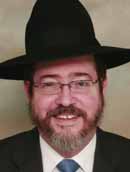 Rabbi Eytan Kobre
Rabbi Eytan Kobre
The first thing to note about Jewish unity is that, at least from where I sit, its absence in the Orthodox world is greatly overstated. On an institutional level there often is, indeed, a divide, and we need to address that; there are also, unfortunately, individuals in all camps who harbor ill will toward those unlike them. But on an interpersonal level, at least in the various shuls and other religious and social venues in New York and wherever else I go both here and in Israel, Orthodox Jews of all stripes mix easily, without rancor and, to the contrary, with a great deal of goodwill and camaraderie.
 Flowers for Shabbos
Flowers for Shabbos
By Rabbi Steven Burg
A number of years ago, when I was chapter advisor for NCSY in Detroit, a newly observant young woman was facing challenges from her parents, whose acceptance of her new lifestyle was still quite tenuous. I took her to see Rabbi Steven Weil, the current executive vice president of the Orthodox Union who was a shul rabbi in Detroit at the time. The foundation that he laid out for her still resonates with me today and should be every religious Jew’s guiding philosophy.
“For each mitzvah bein adam l’Makom that you accept upon yourself,” he advised her, “you must take on two mitzvot bein adam l’chaveiro.”
We need to demonstrate to the outside world—and especially to other Orthodox Jews—that by keeping the Torah, we become better people. We can never allow others to come to the mistaken conclusion that a Torah lifestyle is meant to harden us or make us indifferent to the needs of others who may be different than we are. Torah is meant to heighten our sensitivity to pain in the world, not dull it or—God forbid—cause us to be a source of pain to others.
The young woman in the story took upon herself a wonderful way to fulfill the mitzvoth of kibbud av vaeim and shalom bayit: each week she bought her mother flowers for Shabbat. Such a simple, thoughtful act is surprisingly impactful, and what a kiddush Hashem she made!
Rabbi Steven Burg is managing director of the Orthodox Union.
To be sure, work remains to be done to bring Jews together, and that will always be so in this imperfect world of ours that we are bidden to improve. In working toward unity, we’d do well to utilize a vehicle that the Torah itself tells us is most effective for this purpose: talmud Torah. As the Gemara in Kiddushin (30b) teaches, “Even a teacher and student, or father and son, who study together and [in the process] become ‘enemies,’ will [when done learning] love each other.” It’s an observable reality that, somehow, Torah study bonds the hearts of those who engage in it together, and that power ought to be harnessed more often across ideological lines within Orthodoxy.
But as we go about pursuing unity between the disparate elements of our community—and we are, ultimately, in the broader sweep of things, one community—we need to be mindful that unity as a Jewish ideal is not only prescriptive, but also, or even primarily, descriptive in nature. The pursuit of unity amongst Jews is, in essence, an effort to actualize a deeper spiritual linkage that already exists between us all.
The Lakewood mashgiach, Rabbi Matisyahu Salomon, notes a puzzling passage in the Rambam’s Hilchos Tzedakah (7:1). The Rambam, in extolling the importance of helping one’s needy Jewish fellow, writes: “All of Israel and those who join them are as brothers, as it states, ‘You are children of Hashem, your God’; if a brother won’t have mercy on his brother, who, then, will?”
But, asked Rav Matisyahu, with so very many pesukim in the Torah that refer explicitly to Jewish brotherhood, why did the Rambam adduce a verse that instead speaks of all Jews as God’s children? The Rambam is teaching us, he observed, that Jews’ spiritual kinship derives exclusively from our shared, uniquely Jewish status as children of our Father in Heaven.
A pursuit of unity not founded on Jews’ commonality of origin, destiny and purpose, all of which are rooted in our Divine paternity, may at times be worthwhile as a pragmatic matter, but it can lay no claim to the authentic Jewish conception of that ideal. Nor, for that matter, can Jewish unity possibly be invoked in furtherance of objectives that are injurious to the very relationship with God and His Torah that gives that unity its substance. Most importantly, a call for unity must be an authentic one. It ought not to be wielded as a blunt rhetorical instrument with which to silence views one finds disconcerting and homogenize away deep, and perhaps at times unbridgeable, ideological differences. Unity of purpose, but only in its true sense, can indeed be a powerful vehicle for the great goal of gilui kevod Shamayim.
Rabbi Eytan Kobre is US editor of Mishpacha Magazine and managing editor of Dialogue. He is a former associate general counsel of Agudath Israel of America and lectures regularly at OU seminars.
 Shira Leibowitz Schmidt
Shira Leibowitz Schmidt
Every year the paradox of Chanukah astounds me. In Israel and in the Diaspora, non-observant Jews praise the Maccabees in song, crafts, drama and the media. But in the time of the Maccabean revolt, it was that very sector of assimilated Jews that was the enemy of the Maccabees. Many sources emphasize that the real struggle in Maccabean times was against the Hellenized Jews who imitated Greek culture (Mityavnim). One leader of the Hellenized Jews was Jason, who bought the Office of High Priest and thus was able to establish institutions such as a gymnasium in Jerusalem and turn the city into a Hellenistic polis.
Did the Hasmoneans use violence against the Mityavnim? Unfortunately, we don’t have Jewish sources on this, but 1 Maccabees (2.45-6) says that Mattathias and his colleagues “went about and tore down the altars; they forcibly circumcised all the uncircumcised boys that they found within the borders of Israel.”
This does not mean that today we should emulate them. We have no mandate to do such a thing, certainly not as individuals; we are not Pinchas. As Bar-Ilan University Greek scholar Rabbi David Schaps has stated, “Unity, when taken as an ultimate value means giving up all of our principles, since the other side won’t adopt them; but civil war is a terrible thing, and not to be embarked upon lightly.” This caveat is crucial.
But there is a deeper reason that harmony and unity should not be our summum bonum. For this we look at the Tower of Babel. The text does not specify that building a tower was a sin. The problem was that “the whole earth . . . was of one language and one speech.” The root of the error was not in the construction of a city or tower, but in the aim to ensure “one language and one speech.” Some people aspire to this Esparanto-like situation as an ideal—one people without differences, without conflicts. But this artificial conformity is a threat, for no differences of opinion would be suffered. There would be no struggle over clashing viewpoints and hashkafot and different values. What could be more sterile?
Such sterility is hinted at in Rabbi Akiva’s comment on the verse “the years draw near, when you will say, ‘I see no purpose in them’” (Ecclesiastes 12:1). Rabbi Akiva sees in this a hint of the Messianic Age, “when there will be neither merit nor guilt” i.e., a world sans problems, a Jewry of the “harmony” like that in the symposium question. When those years draw near, says Rabbi Akiva, you will “see no purpose in them.” There will be no place for struggle. (Rabbi Akiva points out a downside of the Messianic Age, and his statement seems to contradict our understanding of the Messianic Age.)
In His mercy and compassion, Hashem prevented such unity and uniformity from occurring. He made a world where there are different, yea opposing, sets of values. It is in the struggle, sometimes shading over to civil war, that grants moral significance. When the “one language and one speech” ceased to prevail, an Abraham was able to arise. And a Judah HaMaccabee.
Shira Leibowitz Schmidt recently co-translated two books from Hebrew to English: Esther Farbstein’s The Forgotten Memoirs: Moving Personal Accounts from Rabbis Who Survived the Holocaust (Brooklyn, 2011) and Rabbi Israel Meir Lau’s Out of the Depths: The Story of a Child of Buchenwald Who Returned Home at Last (New York, 2011).
Listen to an interview with Shira Leibowitz Schmidt at http://www.ou.org/life/inspiration/unity-can-be-dangerous-stephen-savitsky/
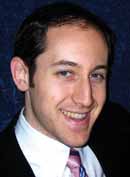 Rabbi Yosie Levine
Rabbi Yosie Levine
When Steve Jobs was planning Pixar’s headquarters in 1999, he insisted the building be arranged around a central atrium. The idea was to encourage and facilitate chance encounters among people who would otherwise have little contact with one another. How else would extroverted cartoonists and introverted computer engineers ever meet?
In generations past, perhaps it was the shul that functioned as our atrium. All types of Jews would gather together to unite in communal worship. We have always recognized that common space generates not only creativity, but relationships. It is those relationships that form the backbone of amicable living. The trouble is that we live in an age of ever-increasing fragmentation. Shuls do a good job of serving their own narrow constituencies, but they are less effective at bringing together differing segments of the community.
We need to think more creatively about creating new atria—new venues for pro-actively bringing together members of the Orthodox community who are not in the habit of interacting with one another. The answer to the question of how to create a more harmonious Orthodoxy is assuredly not to bring shuls together for more “community-wide” gatherings. Simply being in the same room with people unlike us has value, but not that much value.
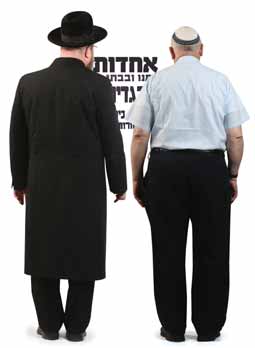 There are, however, existing models that can help us. In my experience, the most effective model for building lasting bridges among Jews of different denominations is the Wexner Graduate Fellowship. A series of leadership training sessions for graduate students interested in pursuing careers in Jewish communal service, it brings together small cadres of Jews from across the denominational spectrum. The fellowship creates a sense of fraternity of a quality that endures.
There are, however, existing models that can help us. In my experience, the most effective model for building lasting bridges among Jews of different denominations is the Wexner Graduate Fellowship. A series of leadership training sessions for graduate students interested in pursuing careers in Jewish communal service, it brings together small cadres of Jews from across the denominational spectrum. The fellowship creates a sense of fraternity of a quality that endures.
Part of what makes the program so effective is the foundation’s willingness to use its resources to hire top professionals and generate the most well-thought-out strategies for achieving its goals. If the Orthodox community wants to put intra-denominational tolerance on its agenda, the Wexner model is an excellent place to begin. Imagine a seminar that brings together rabbinical students from Yeshivat Chovevei Torah, Yeshiva University, Ner Israel, Chabad, Chaim Berlin and Lakewood. Or think of a sister program for communal lay leaders spanning the full gamut of Orthodoxy. Over time, with the right curricula and facilitators, we could make great strides.
To achieve meaningful results, we would do well to recognize two important points. First, community building is only effective to the extent that those engaged in the process share a common vision. I am not yet convinced that the full sweep of our community has demonstrated enough of an appetite for this kind of endeavor.
Second, any progress we make in this realm will ultimately be a direct function of the funding and human capital we are willing to invest. Tolerance emanates from relationships. And those relationships do not often emerge organically. They require strategic thinking, deliberative planning, collective buy-in and professional execution. Our community is blessed with the resources and people capable of making this happen, but first we need to collectively identify it as a priority.
Rabbi Yosie Levine is rabbi of The Jewish Center in New York City.
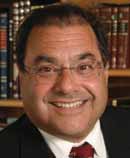 Rabbi Shlomo Riskin
Rabbi Shlomo Riskin
Is it possible to achieve an overarching commitment to the unity of Klal Yisrael, a genuine sense of ahavat Yisrael, with Jews of other factions or denominations whom we believe are damaging our Jewish image, weakening our Jewish traditions and desecrating the name of God? As an Orthodox Zionist Jew in Israel, I believe the Chareidi decisors are vitiating the halachah which I hold so dear by making it almost impossible for a religious court to compel a recalcitrant husband to give a get, by nullifying conversions by legitimate Orthodox rabbis, by refusing to encourage their young men to at least do National Service if they won’t enter the IDF, and by relegating women to the back of the bus. Similarly, I’m also convinced that non-halachic interpretations of Judaism are robbing their adherents of the fullness of our 4,000-year-long tradition, are threatening the unity of our people when they change the laws of conversion and are even falsifying the words of God. So how can I love them—or, even harder still, come to respect them?
I would suggest that if we use the Talmud as our guide, we may discover the way out of our conundrum. I do not believe there exists in any language or civilization a more open, diverse and pluralistic (yes, I’m using the “p” word) literature than that of the Talmud, filled with antithetical opinions about every topic imaginable—from one rabbi who would permit chicken smothered in dairy cream sauce, to another who would convert a gentile who denied the legitimacy of the Oral Law and to a third who claimed that gazing at a woman’s finger was a capital crime. Despite their differing opinions, however, the rabbis of the Talmud retained a healthy regard and respect for each other, which enabled them to work together in what became the monumental enterprise of the Talmud, the amazing expression of the foundations of our Oral Law.
Gut Shabbos
By Matis Greenblatt
Gut Shabbos! two words
tossed off almost
unconsciously.
Touching and arousing
unused corners
of the soul,
melting walls of
individuality
to join God’s people
in subtly proclaiming
the Creator’s process.
Matis Greenblatt is literary editor of Jewish Action
It seems to me that there were two fundamental axioms which informed the mentality of our Talmudic Sages and which are lacking in Jewish leadership today—and herein lies the key to ahavat Yisrael even for those with whom we disagree on fundamental issues. First of all, we must engage in private and public debate—dialogue with each other. Such encounters in no way imply that one is thereby agreeing with or legitimizing the position or ideas of the other; yes, it does imply that the other has the right to his opinion, but God did create us with free choice, and the right to differing opinions (Mishnah, Sanhedrin 37a).
Moreover, by not debating with an individual with whom you disagree, you may well end up delegitimizing yourself! One of the most successful educational enterprises conceived in recent years is Limmud, an around-the-clock learning fest of Jewish subjects. It was initiated by university students in England, held during the week between Christmas and New Year’s. The Orthodox establishment in England ruled that Orthodox rabbis not attend, claiming that since there were Masorti (Conservative) and Reform rabbis participating, the Orthodox presence would legitimate them. This past year there were close to 3,000 participants, truly eager to learn, with hardly any presenting Orthodox scholars. Who ended up delegitimized and devoid of an audience? After all, it is everyone’s right to change his mind, and I don’t always agree with something I said a week ago.
The second axiom underpinning the pluralism in the Talmud is that there is always room to learn something valuable even from those with whom one may disagree on basic issues. “Who is a sage? He who learns from every individual.” It is recorded in the Talmud that Rav Meir continued to learn from “Acher” (Elisha ben Abuya, his former rebbe-turned-heretic), an act which the other sages justified because Rav Meir was great enough to distinguish between the “fruit”—which he accepted, and the “rind”—which he would discard (Chaggigah 15b).
And if the concern is for the often-uneducated audience in attendance, they for the most, part will be exposed to the heterodox views in any case, whereas if there is a debate-dialogue, at least they will have an opportunity to hear the Orthodox position as well, properly explained and articulated. My own experience in such encounters is that even the heterodox leaders themselves are often moved and inspired to come closer to tradition as a result. If we are confident in the truth of our position, there is no need to fear discussion.
The bottom line for me is the fact that there is a great deal to be learned from those to the right of us as well as from those to the left of us. I believe that the Modern Orthodox and Dati Leumi community has learned much about punctilious observance of commandments and serious commitment to Torah study from the Chareidim (the Yeshivat Hesder movement emerged from this), and outreach Orthodoxy has learned much about the importance of decorous services, relevant sermons and social action communal activities from the heterodox denominations. If we can respectfully dialogue with and learn from the religious movements with whom we disagree (even though we may not always be able to daven with them), we shall have come a long way toward ahavat Yisrael and the unity of our people.
In the words of Rabbi Avraham Yitzchak HaCohen Kook: “Scholars increase [marbim, Hebrew plural form] peace in the world.” A multiplicity of peace means that all sides and all views must be considered; then it will be clarified how each one of them has its place, each one in accordance with its value, its position and its application . . . Only through a collection of all parts and all details, including all of those ideals which appear to be different as well as all disparate professional opinions, only by means of all of these all together, will there be revealed the light of truth and righteousness, and the fullness of the wisdom of the Lord, His love and the light of true Torah (Ein Ayah, end of Tractate Berachot).
Rabbi Dr. Shlomo Riskin is founder and chancellor of the Ohr Torah Stone Colleges and Graduate Programs and is chief rabbi of Efrat, Israel.
 Taking Unity to the Streets
Taking Unity to the Streets
By Bayla Sheva Brenner
Just before Chanukah of 2009, a group of women living in the Old City decided to reach out to the secular Israelis who come through the neighborhood each year to view the myriad menorahs placed at the doorways. Throughout the eight days, the women set up tables and offered free cups of hot cocoa, coffee and tea to the visitors. The women saw it as “an opportunity to send the message of ahavat Yisrael to the greater community.”
In the years since, the women have begun working officially with tour groups to bring the “tourists” into their homes to enjoy sufganiyot and stimulating discussions about Chanukah. Thousands of Israelis pass through the Old City during Chanukah; the Old City residents are grateful for the opportunity to befriend their brothers and sisters. “It’s about loving your fellow Jew,” they said.
Bayla Sheva Brenner is senior writer in the OU Communications and Marketing Department.
Almost everything I read in Torah, Tanach and Torah Shebe’al Peh seems to say likewise. Judaism is the only religion I know all of whose canonical texts are anthologies of arguments: arguments between God and humans, humans and God, humans and one another. The Mishnah preserves the arguments of the sages even when it knows that the law is like one and not the other. The greatest work ever undertaken to eliminate argument from its pages was the Mishneh Torah, and it gave rise to more arguments than any other.
Differences, arguments, clashes of style and substance are signs not of unhealthy division but of health. The Judaism of Torah, emunah and halachah continues to do what it has done for so long—to defeat the law of entropy that states all systems lose energy over time. Not Judaism. Where you find argument, there you will find passion.
What, then, is the proper response to the current situation? First, not to take too seriously the fact that someone delegitimizes you. When this happens, the only thing to do is remember Rabbi Yochanan ben Zakkai’s dying words: “Halevai sheyehei morah Shamayim alecha kemorah bassar v’dam. Would that you worried about what God thinks instead of worrying about what another person thinks.”
Second, to maintain your own position without criticizing others. There have been moments, thankfully few, when things I have said have been interpreted that way; if so, I apologize. The truth is, “Hamoser din al chaveiro hu ne’enash techilah. One who passes judgment on his fellow is judged first.” It is not necessary to negate in order to affirm.
All that is necessary to achieve ahavat Yisrael is to remember daily that Hashem loves us—all of us—despite our differences, failings and disagreements.
Hashem loves and forgives. Let us love and forgive.
Rabbi Jonathan Sacks has been chief rabbi of the United Hebrew Congregations of the Commonwealth since September 1991.
Listen to an interview with Chief Rabbi Lord Jonathan Sacks at http://www.ou.org/life/inspiration/jewish-unity-the-righteous-and-the-self-righteous-jonathan-sacks/
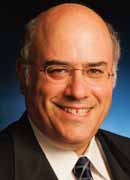 Rabbi Dr. Jacob J. Schacter
Rabbi Dr. Jacob J. Schacter
To my mind it all comes down to one very simple and basic issue: Do we have respect for the legitimacy of opinions with which we disagree? I believe that many of the challenges to harmony that we face in our community stem from the fact that too many of us are not prepared to respond yes to this question. And yet, for me, the answer is obvious. It is a truism that our tradition has always recognized the simultaneous coexistence of a multiplicity of opinions, and it has done so in a variety of contexts. On a most obvious level, Rashi and Ibn Ezra may have very different interpretations of a pasuk, the Ramban may be very critical of the Rambam in his Perush al haTorah, and the Mechaber and the Rema may have radically different halachic opinions, but it is clear that each opinion is valid and legitimate.1
This diversity exists not only in matters of exegesis and even halachah, but also in the realm of worldview or hashkafah within which many of our most bitter contemporary cultural battles today are being fought. Most pertinent here is a comment of the Netziv in his Torah commentary at the end of parashat Shelach. He writes that not everyone’s approach to avodat Hashem is similar: one person may be exclusively involved in Torah study, another in avodah and another in gemilut chasadim, and they are all acting “for the sake of Heaven.” And, he continues, within the world of Torah study itself there are different “ways of learning,” and even in the realm of religious observance, different people have a right to be scrupulous about different mitzvot.
And if a person were to come and ask what is the most correct way that he should choose in his studies or about what should he be most punctilious [in his mitzvah observance], it is for this that Kohelet said, “And follow the ways of your heart,” that is, to what one’s heart is attracted. 2
This passage, in which the Netziv champions a substantial measure of personal autonomy and individual choice in determining the specifics of one’s relationship to God, is extraordinary and needs to be reproduced and emblazoned on the doors of all our communal institutions and private homes. Its message is clear: no one perspective has a monopoly on truth, and alternative approaches are all equally legitimate. Genuine harmony and greater tolerance within our Orthodox world without compromising one’s core beliefs and ideals could be achieved if this message were to be successfully delivered. The well-known rabbinic principle of eilu v’eilu divrei Elokim chayim (Eruvin 13b), although worn thin by repeated citation, needs to have moral, not only intellectual, consequences.
Notes
1. There is a large—and growing—literature on this subject. See, for example, Michael Rosensweig, “Eilu ve-Eilu Divrei Elokim Hayyim: Halakhic Pluralism and Theories of Controversy,” in Moshe Sokol, ed., Rabbinic Authority and Personal Autonomy (Northvale and London, 1992), 93-122.
2. Netziv, Ha‘amek Davar on Bamidbar 15:41. The notion that Jews may have different spiritual propensities—all of which are legitimate—was an important one for the Netziv. See also his Ha’amek Davar on Vayikra 19:2 and Devarim 10:12.
Rabbi Dr. Jacob J. Schacter is university professor of Jewish history and Jewish thought and senior scholar, Center for the Jewish Future, Yeshiva University.
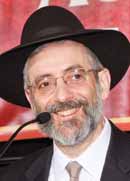 Rabbi Chaim Dovid Zwiebel
Rabbi Chaim Dovid Zwiebel
Writing in the Jewish Observer twenty years ago, Rabbi Moshe Sherer z”l, the late president of Agudath Israel of America, focused on the challenge of Jewish unity from an Agudath Israel organizational perspective:
We must recognize that there exists an inherent tension between, on the one hand, Agudath Israel’s status as an ideological movement that stands for a specific set of principles and hashkafos; and, on the other hand, Agudath Israel’s goal to mobilize as many segments of Orthodoxy as possible under its organizational banner. Unity is typically achieved by emphasizing the lowest common denominator—but when the denominator becomes too low, there is a danger that basic principles may be sacrificed.
The “inherent tension” described by Rabbi Sherer characterized the complex relationship that existed at that time between Agudath Israel and the Orthodox Union. On many issues, the two organizations worked side-by-side, occasionally even hand-in-hand, to promote the interests of Torah Jewry. However, the OU’s membership in the Synagogue Council of America (an “inter-denominational” organization comprised of the major rabbinic and synagogue groups of the Reform, Conservative and Orthodox movements) was seen by the rabbinic leadership of Agudath Israel as a de facto legitimization of the heterodox movements and the kefirah they espoused—and hence drove an ideological wedge between Agudath Israel and the OU.
Today, the Synagogue Council of America is no more. If there are mechitzot that still divide the OU and Agudah, they are far less visible than they were twenty years ago. And, indeed, the two organizations are far closer than they were twenty years ago.
Far more important than organizational relationships, the grassroots constituencies of the OU and Agudath Israel have moved closer together over the last number of years. Labels such as “Modern Orthodox” and “Chareidi,” while perhaps once useful in helping to identify different segments of the community of shomrei Torah u’mitzvot, have less meaning in an era when there has been a discernible “move to the right” in traditional OU circles—greater meticulousness in halachic observance, greater emphasis on Torah study, greater respect for rabbinic authority. Nor do labels mean much when Torah Jews of all backgrounds struggle with the same challenges in raising their children, paying for the high cost of education and Jewish living and dealing with a secular culture whose values are so diametrically opposed to those of Sinai.
So I think it is inevitable, and wonderful, that the worlds of Agudath Israel and the OU will continue to grow closer together in the months and years ahead. But we must bear Rabbi Sherer’s admonition in mind. The common denominator around which we congregate dare not become so low as to compromise basic Torah principles.
We can speak of Orthodox unity, but not at the cost of standing firm against anti-halachic inroads of modern-day feminism in our synagogues, against the legitimization of deviant lifestyles in certain Orthodox circles and more generally against those on the left fringes of Orthodoxy who would undermine the masoret avot that has preserved Klal Yisrael as a mamleches kohanim v’goy kadosh throughout the millennia.
Taking a stand on principle does have the capacity to divide. But it also has the capacity to clarify, teach and elevate. Both the OU and Agudath Israel have no higher calling.
Rabbi Chaim Dovid Zwiebel, Esq., is the executive vice president of Agudath Israel of America.

